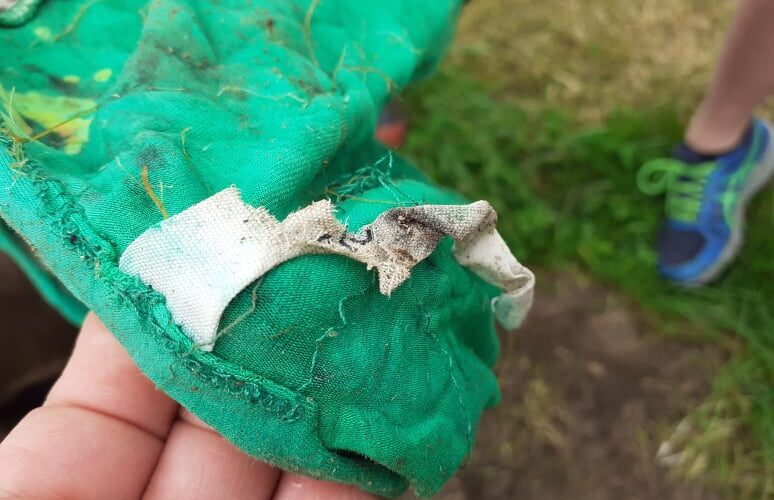Now that you’ve actually had a look at your soil, dug a few holes, prodded for lower down compaction, it’s time to test how lively the life in your soil is.
You can see worms, or perhaps nematodes, but for most of the critters working down there you would need a strong microscope. But as we said in the first article, their buzzword is “symbiosis”, and working together is what they do. If we can’t see them, maybe giving them something to chew on might show us they really exist.
But what would they like? Material high in cellulose or lignin can work, but if it rains you don’t want it to wash away like paper. Some much publicised overseas research came up with the idea of cotton, and some (probably male) smart alec came up with the phrase “Don’t soil your undies”. However, others have been using standardised strips (say 20cm x 15cm) of unbleached calico, prewashed to remove any contaminants from manufacture. If you want to get picky about possible results, dry and weigh each piece and record data to 1g.
When you get to each trial site, create a vertical slit about 20cm deep with your spade.
To insert the cotton, fold it over the bottom edge of the spade and slide it down into the slot. Leave about 3cm of the cotton sticking out so you can find it again. Push the soil at the sides back so there is good contact with your strip on both sides. Mark the site, and start all tests on the same day.
Then wait. Three weeks minimum in moist soil that is biologically active. If it’s not, wait eight weeks. Dig the strips up, don’t pull them as they are likely to tear.
Photograph what’s left, against a plain background (white cardboard) and record site details. If wet soil means there is a lot clinging to the cotton, hand-wash off. Compare results from each site and take more photos. If the critters have been busy, there may well be nothing left. For the next test, try shorter time intervals, and several strips at the same spot. These can be dug up sequentially to monitor the decomposition rate.
Be aware that the biological activity in soil can be also affected by soil moisture, weather and soil temperature, and nutrient availability, particularly chemical N, which gets soil bacteria hungry and excited.
Because of the variables , (including what can have affected the sites, such as machinery, crop types and spacing, fence line, middle of field, gateway etcetera) results will not give definitive answers on soil life, and should be used for comparative purposes only.
This test is even being done in New Zealand to teach kids about the chewy activity going on in soils. For this we are indebted to North Otago Sustainable Land Management (NOSLaM), who received funding from the Curious Minds Participatory Science Platform and Otago Regional Council and who worked with Beef+LambNZ on a series of trials at various Otago primary schools, and who generously provided the chewed photos.
The Aussies event held a nationwide competition, “Soil Your Undies”, and the results were predictably variable:
Too much or too little rain gave some of the critters less chance to chomp in – but for many there were only the elastic bits left!
Maybe we should do it here and see what happens, or doesn’t. New undies if you are feeling rich, and calico strips if not. Eight weeks for undies, and three for strips. Feds could organise it.
Who am I? Sue Edmonds is a farming and science writer from Waikato.






